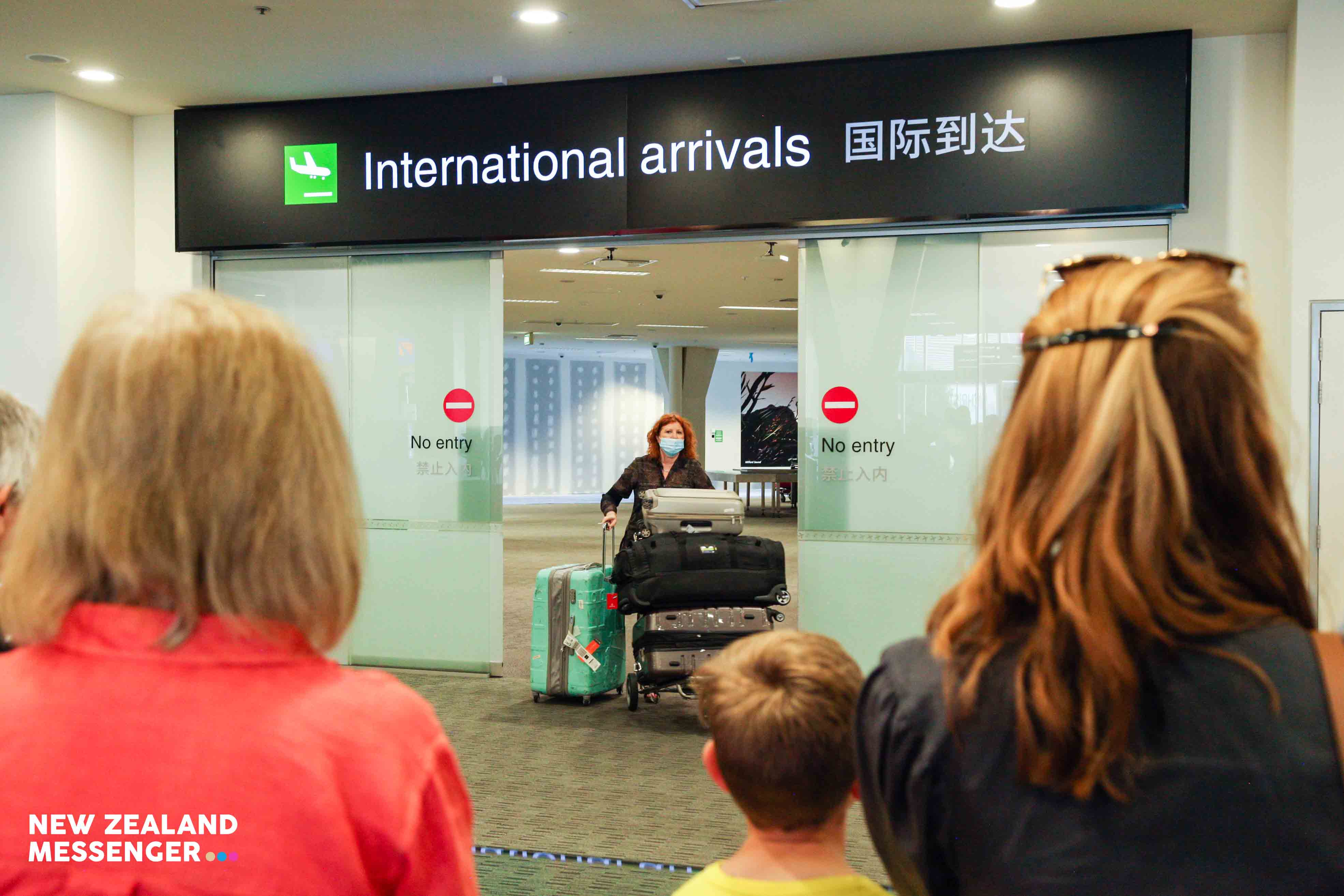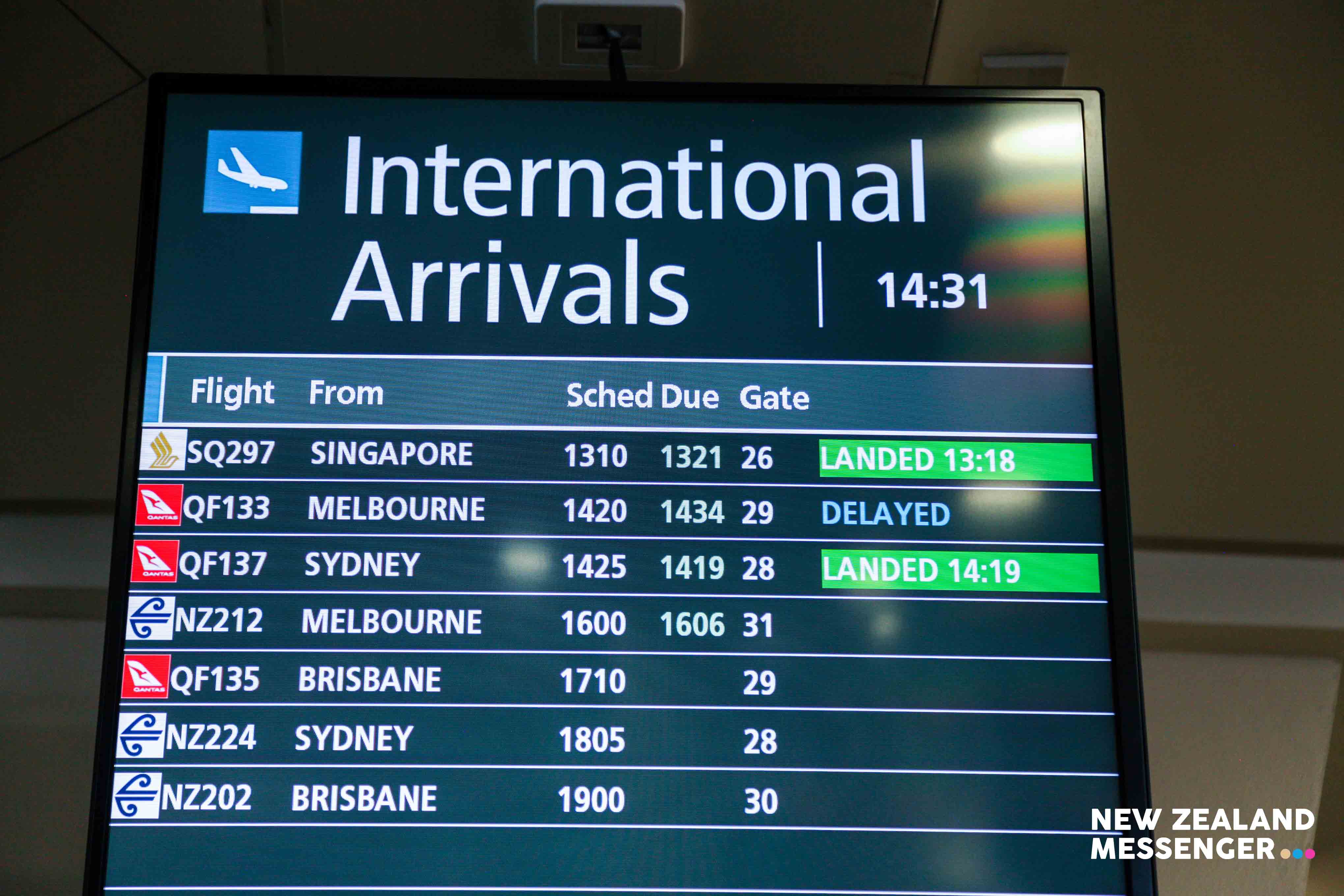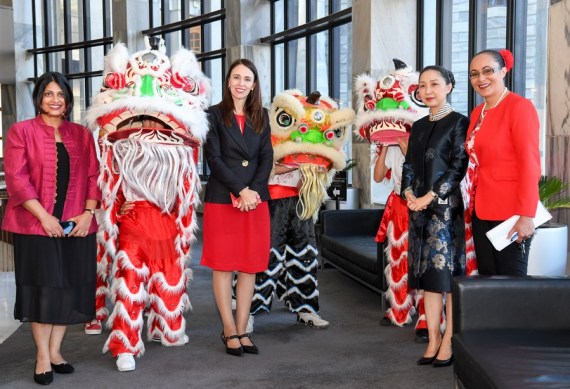By Li Huizi and Hao Yalin
Video by Chris Li
Christchurch resident Priscilla came to the airport an hour earlier to meet and greet her dear daughter Julia.
“It’s obviously fine talking on the computer, but there will be something wonderful about seeing her for real,” said Priscilla while waiting for Julia to arrive from Sydney.
The opening of the trans-Tasman bubble or quarantine-free travel between New Zealand and Australia on Monday allowed the reunion of many families separated by the Tasman Sea and the prolonged COVID-19 pandemic.
Priscilla, who has not seen her daughter since Christmas 2019, was very excited. She will come to the airport again on Tuesday to meet her 18-month-old grandchild she has never met, coming from Australia.
“Two great days!” Priscilla said.


On the other side of the Tasman Sea, Renee Monger was standing outside the arrival exit of the Sydney international airport, expecting her sister and three nieces.
“We haven’t seen them in about 18 months. They are due to come here last year at this time, but obviously COVID hit and everything closed, so we are very, very excited to see them,” Monger said.
“It’s been a very long time. We normally see each other about three or four times a year,” she added.
It was the same for Olivia’s parents and brother. They have not seen her for about one and a half years. Olivia is a student in Auckland, whose trip to home in Sydney had been hindered by the COVID-19 pandemic.
Olivia told Xinhua that she planned to stay in Sydney for two weeks, and the first thing she would do was to enjoy a home cook for her. She really missed her mum’s cooking.
“I went to Auckland in February last year just before we went into lockdown, and then got stuck,” she said.
“TRULY EXCITING”
New Zealand Prime Minister Jacinda Ardern said the travel bubble opening was “truly exciting.”
“Be it returning family, friends or holiday makers, New Zealand says welcome and enjoy yourself,” she said.
A one-way Safe Travel Zone from New Zealand to Australia was opened last October, with more than 34,000 arrivals in Australia from New Zealand during that period.
The two-way travel bubble, opened on Monday, means reconnecting with loved ones and resuming the trans-Tasman travel. It also brings hope to the struggling tourism sector, and helps with the economic recovery of both countries, according to Ardern.
The trans-Tasman route is Australia’s busiest international aviation market, with more than 7 million passengers in the one year ending January 2020.
The aviation industry sees great opportunity. From Monday, Australia’s carriers Qantas and Jetstar will initially operate up to 122 return flights per week across the Tasman on 15 routes, offering more than 52,000 seats each week. Qantas will also launch two new routes directly from Auckland to Cairns and the Gold Coast, providing travelers with more options for holidays, according to the airline companies.
A spokesperson with the Australian Trade and Investment Commission (Austrade), an Australian government agency, said that the commencement of a two-way travel corridor between Australia and New Zealand will give tourism operators a significant boost, with around 18 percent of all international air arrivals from New Zealand annually and with visitors to Australia now having the opportunity to travel without having to quarantine at either end of their journey.
In 2019, there were more than 1.4 million visitors from New Zealand who spent 1.6 billion Australian dollars (1.24 billion U.S. dollars) on travel and tourism in Australia, statistics show.
Meanwhile, both Ardern and Australian Prime Minister Scott Morrison have said they would be looking to extend quarantine-free travel to other countries in the Pacific.
GRADUAL OPENING
The flights were the first of many, with Qantas, Jetstar and Air New Zealand saying they were expecting to fly about 10,000 people on trans-Tasman routes on Monday alone, the first day of the bubble opening.
The Christchurch International Airport currently has 52 flights scheduled for the week, similar to the pre-COVID level.




All the digital screens are displaying such messages as “Kia ora! Welcome back Aussie friends and whanau (means ‘community’)” and “G’day mate! It’s great to see you again.”
Changes have been made to enable separate processing of so-called “red” (passengers going to isolation and quarantine and who do not come into the public areas of the terminal) and “green” flights (quarantine free), according to the Christchurch airport Chief Aeronautical and Commercial Officer Justin Watson.
“We have physically split the international arrivals area into two distinct pathways to allow simultaneous operations,” Watson said, adding the airport’s frontline staff have been vaccinated and are looking forward to safely welcoming international travelers again.
In Wellington, preparations at the Wellington International Airport are complete, hotels and operators have experienced a boost in bookings, while family and friends are primed for some emotional reunions.
A 250m x 12m welcome mural has been displayed on the grass area at the northern end of the runway to greet flights and passengers arriving.
However, the authorities have warned that people need to plan for the possibility of having travel disrupted if there is a COVID-19 outbreak.
Photos by Chris Li










